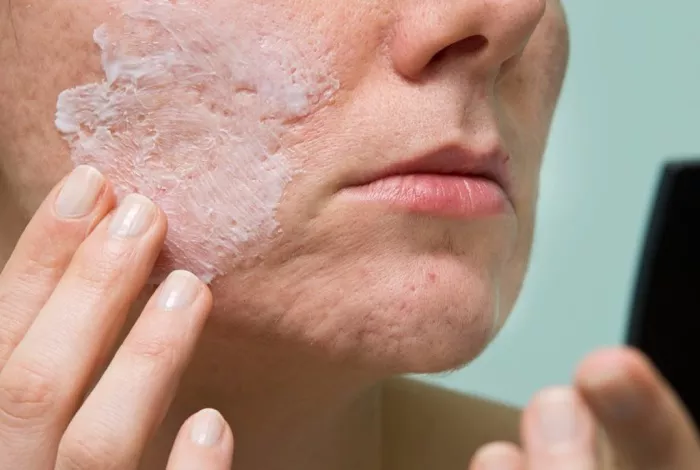Burn injuries can be devastating, both physically and emotionally. In addition to the immediate pain and trauma, burn survivors often face long-term challenges associated with scarring and disfigurement. While some burn scars may fade over time, others may persist for years, impacting both physical function and self-esteem. In this article, we delve into the complexities of burn scars, exploring the factors that influence their healing process and offering insights into the journey toward recovery.
The Impact of Burn Scars
Burn scars can vary widely in severity, depending on factors such as the depth and extent of the burn injury. Superficial burns, such as first-degree burns, typically heal relatively quickly and may not leave lasting scars. However, more severe burns, such as second-degree and third-degree burns, can result in significant scarring and tissue damage.
In addition to physical disfigurement, burn scars can have profound psychological and emotional effects. Many burn survivors struggle with feelings of self-consciousness, anxiety, and depression due to their altered appearance. The presence of visible scars can also impact social interactions and relationships, leading to feelings of isolation and alienation.
The Healing Process
The healing process for burn scars can be complex and multifaceted, often requiring specialized medical care and rehabilitation. The timeline for scar healing varies depending on factors such as the severity of the burn, the location of the injury, and the individual’s overall health and healing capacity.
Immediately following a burn injury, the body initiates a series of physiological responses to repair damaged tissue and promote healing. In the early stages of wound healing, inflammation and swelling are common as the body works to remove debris and initiate the formation of new tissue. Over time, scar tissue begins to form, gradually replacing the injured skin.
Types of Burn Scars
Burn scars can manifest in different forms, ranging from raised, thickened scars to flat, discolored patches of skin. The type of scar that develops depends on various factors, including the depth of the burn injury and the individual’s healing process. Common types of burn scars include:
Hypertrophic scars: These scars are raised, thickened, and may appear red or pink in color. Hypertrophic scars often develop within the first few months following a burn injury and may gradually improve over time.
Keloid scars: Keloids are a type of raised scar that extends beyond the boundaries of the original wound. Keloid scars are more common in individuals with darker skin tones and may require specialized treatment to manage.
Contracture scars: Contracture scars occur when the skin tightens and contracts during the healing process, leading to restricted mobility and range of motion. These scars are particularly common in burn injuries involving large areas of the body or joints.
Atrophic scars: Atrophic scars are characterized by thin, depressed areas of skin that appear sunken or indented. These scars may result from loss of underlying tissue or fat following a severe burn injury.
Factors Influencing Scar Healing
Several factors can influence the healing process and eventual appearance of burn scars. These include:
Severity of the burn: The depth and extent of the burn injury play a significant role in determining the severity of scarring. Deeper burns are more likely to result in long-term scarring and tissue damage.
Location of the burn: Burn scars located on highly visible areas of the body, such as the face, hands, or neck, may have a more significant impact on self-esteem and quality of life.
Age and overall health: Younger individuals tend to heal more quickly and may experience less severe scarring compared to older adults. Additionally, factors such as nutrition, smoking, and underlying health conditions can affect the body’s ability to heal.
Treatment and rehabilitation: Early intervention and specialized treatment can help minimize scarring and improve overall outcomes for burn survivors. This may include surgical techniques, such as skin grafting or laser therapy, as well as physical therapy to improve range of motion and function.
The Role of Scar Management
Effective scar management is essential for optimizing outcomes and minimizing the long-term impact of burn scars. Scar management techniques may include:
Topical treatments: Over-the-counter and prescription ointments, gels, and silicone-based products can help reduce the appearance of scars and improve skin texture and elasticity.
Pressure therapy: Pressure garments or dressings may be recommended to apply gentle pressure to the scar tissue, helping to flatten and soften raised scars.
Massage therapy: Regular massage of the scar tissue can help improve circulation, break down scar tissue, and promote collagen remodeling.
Laser therapy: Laser treatments can target discoloration and improve the texture and appearance of burn scars by stimulating collagen production and promoting skin regeneration.
Surgical interventions: In some cases, surgical procedures such as scar revision or tissue expansion may be necessary to improve the appearance and function of burn scars.
The Journey Toward Healing
Recovering from a burn injury and its associated scars is a journey that requires patience, perseverance, and support. While some burn scars may fade significantly over time, others may remain visible for years or even a lifetime. It’s essential for burn survivors to seek out comprehensive care and support from a multidisciplinary team of healthcare professionals, including burn specialists, plastic surgeons, and mental health providers.
In addition to medical treatment, emotional support and counseling can play a crucial role in helping individuals cope with the psychological and emotional impact of burn scars. Connecting with other burn survivors and participating in support groups or peer mentoring programs can provide a sense of community and understanding during the healing process.
Conclusion
Burn scars are a visible reminder of the physical and emotional trauma associated with burn injuries. While some scars may fade over time, others may persist, requiring ongoing care and management. By understanding the factors that influence scar healing and exploring the various treatment options available, burn survivors can take proactive steps toward recovery and reclaiming their sense of self. With patience, perseverance, and support, the journey toward healing is possible, offering hope and restoration to those affected by burn scars.
[inline_related_posts title=”You Might Be Interested In” title_align=”left” style=”list” number=”6″ align=”none” ids=”7019,7016,7013″ by=”categories” orderby=”rand” order=”DESC” hide_thumb=”no” thumb_right=”no” views=”no” date=”yes” grid_columns=”2″ post_type=”” tax=””]
































